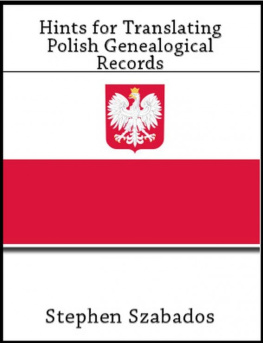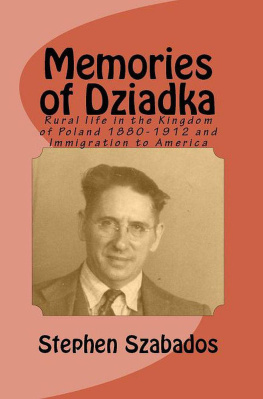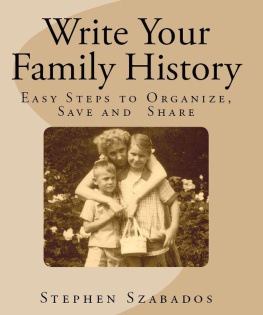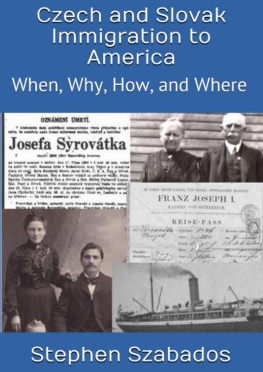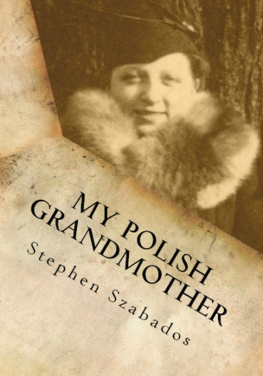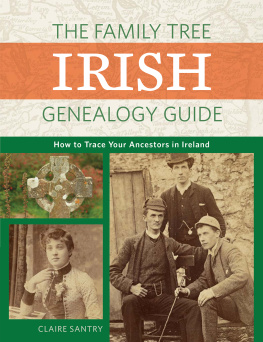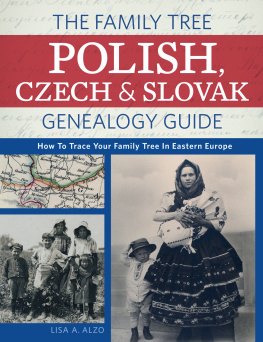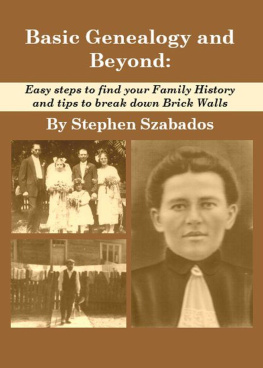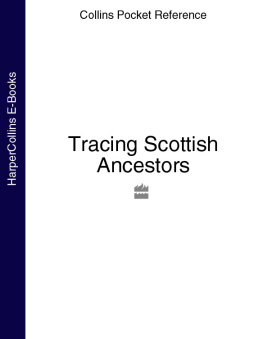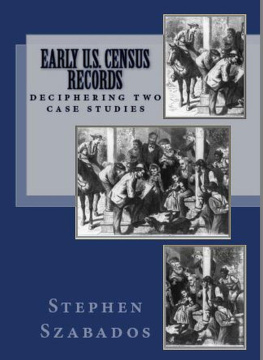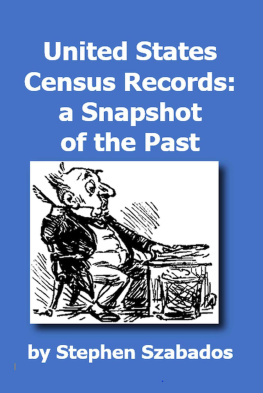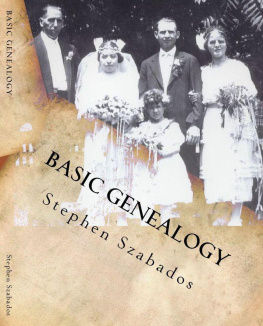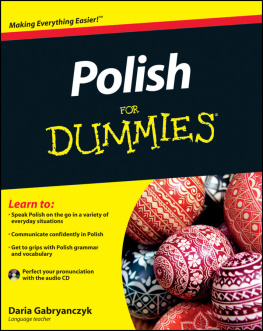Stephen Szabados - Hints for Translating Polish Genealogical Records
Here you can read online Stephen Szabados - Hints for Translating Polish Genealogical Records full text of the book (entire story) in english for free. Download pdf and epub, get meaning, cover and reviews about this ebook. year: 2016, publisher: Stephen Szabados, genre: Home and family. Description of the work, (preface) as well as reviews are available. Best literature library LitArk.com created for fans of good reading and offers a wide selection of genres:
Romance novel
Science fiction
Adventure
Detective
Science
History
Home and family
Prose
Art
Politics
Computer
Non-fiction
Religion
Business
Children
Humor
Choose a favorite category and find really read worthwhile books. Enjoy immersion in the world of imagination, feel the emotions of the characters or learn something new for yourself, make an fascinating discovery.
- Book:Hints for Translating Polish Genealogical Records
- Author:
- Publisher:Stephen Szabados
- Genre:
- Year:2016
- Rating:5 / 5
- Favourites:Add to favourites
- Your mark:
- 100
- 1
- 2
- 3
- 4
- 5
Hints for Translating Polish Genealogical Records: summary, description and annotation
We offer to read an annotation, description, summary or preface (depends on what the author of the book "Hints for Translating Polish Genealogical Records" wrote himself). If you haven't found the necessary information about the book — write in the comments, we will try to find it.
Hints for Translating Polish Genealogical Records — read online for free the complete book (whole text) full work
Below is the text of the book, divided by pages. System saving the place of the last page read, allows you to conveniently read the book "Hints for Translating Polish Genealogical Records" online for free, without having to search again every time where you left off. Put a bookmark, and you can go to the page where you finished reading at any time.
Font size:
Interval:
Bookmark:
Hints forTranslating
Polish GenealogicalRecords
By StephenSzabados
Copyright 2014
ISBN: 9781370914944
Table of Contents
Record Format
The vital records that youfind will usually be in one of two formats narrative orcolumnar.
Map showing the boundariesof the Kingdom of Poland
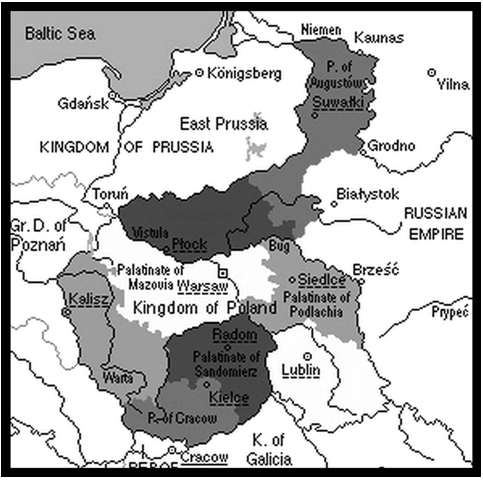
The narrativeformat is found in the records from the Polish area that was callthe Kingdom of Poland which was controlled by Russia. Theborders of the Kingdom of Poland were created in 1815by the Congress of Vienna. The format will also be found in therecords for Krakow. The format was introduced in Poland by Napoleonin 1808 during his short-lived control of the area, and itsuse wascontinued after his defeat. The systemthat Napoleon introduced required that the birth, marriage, and death registers were to be keptby state officials but since there were not enough state officials to perform theduties, the clergy were frequently appointed to record theseevents. Polish Catholic clergy was responsible for all civil registration from 1808 until 1825.Beginning in 1826, Jews, Evangelical Lutherans, Protestants,Russian Orthodox, Greek Orthodox and others were allowed tomaintain separate civil registers.
The Napoleonic format waswritten in Polish until the Tsar tightened his control over hisPolish provenances and required the use of Russian on all records.In 1868, officials and priests began using the Cyrillic alphabetand Russian for vital records Russian was used for this area untilafter WW I when the language used reverted to Polish.
The Napoleonicrecords werewritten in a narrative or story-likeformat. The records were written in a set format with thelocation of the various facts of the life events recorded in aspecific order. The basic elements of fact will be found in thesame location on each document. However, they are hard to translatebecause they are handwritten and many words are hard todecipher. Judith Frazins book A Translation Guide to 19 th -Century Polish-Language Civil-Registration Documents is an excellent book to help translate recordsfound in the Napoleonic format. It lists many phases in Polish andEnglish that will befound in the records which makestranslating the records much easier.
Below you will find samplesof both formats.
Sample record from FamilyHistory Center Film Narrative Format
Below is a marriage record for Pawel Chmielewski and Balbina. It isa sample of a Polish marriage record that is in the narrativeformat. I have included a translation on the next page for therecord.
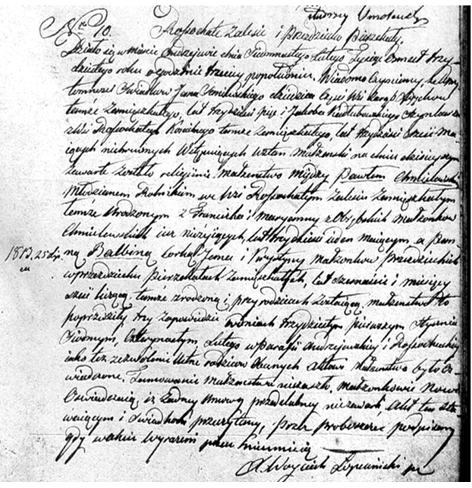
Translation of Marriagerecord for Pawel Chmielewski and Balbina
Thismarriage happened in the city ofAndrzejewo on the 12th of Feb. in the year1830 at three p.m. came in thewitnesses Jan Chmielewski 35 yrs old a landowner from thevillage of.............? and residing there alsopresent was Jakub Kaltubowski, a landlord from thevillage of Pierzchaly - Koscielne and residingthere 36 yrs. Old andthey informed me that today a religious marriage ceremony tookplace between Pawel Chmielewski a bachelor farmer from the villageof Pierzchaly - Zalesie where he was born to the married coupleFranciszek and Marianna Obrebska both deceased and between anunmarried woman Balbina sixteen years old the daughter of Jan andKrystyna a married couple the .............? residents ofPierzchaly who was born there and lived there being supported byher parents. This marriage ceremonypreceded three marriage bans on the following dates: 31st ofJanuary, the 7th & 14th of February of this year in theParishes of Andrzejewo and also in the village of Pierzchaly - Zalesie. They have received verbal permissionto marry, and no objections were made to this marriage.The newlyweds informed me that they did not have a prenuptial agreement of any kind. This recording was read to the present witnesses by me, and it was signed by meonly since none of the present witnesses could write.
Signed by (Father WojciechLipiecinski)
Sample Record from FamilyHistory Center film Columnar Format
The vital records found inPolish provenances controlled by Germany (Prussia) and Austria willbe in the columnar format. The records found in the Austriancontrolled partition werewritten in Latin or German. In the German(Prussian) controlled provenances the records were written inGerman, Latin or Polish. These records are easier to translatebecause the headings of each column are printed and easier to read.Word lists can easily be used to translate the headings whichreduce the number of handwritten words that need to be decipheredand translated.
Below is a page from aPolish churchs register of deaths. This page is a sample ofthe Columnar format. Note that the headings are inLatin.
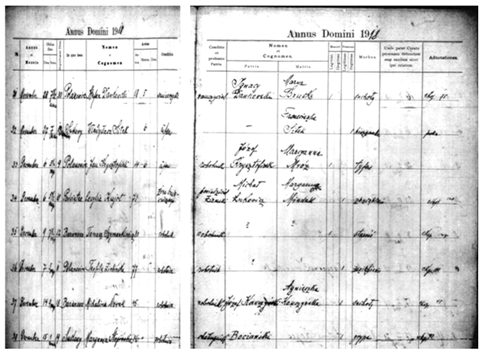
Using the Polish registers is simplified by the indexesthat arecompiled on ayearly basis and usually found immediately after the records are indexed. The indexesusually include a record number and sometimes a page number.Sometimes the index for birth, marriage, and death records was found after each type of record, but sometimes the indexesare grouped together at the end of the years records. The qualityof indexes varies and some will fail to list some records or someyears will not have an index. Although indexes are a great help,they should not be relied upon completely because some entries maybe inaccurately indexed or not indexed at all. Also, the spelling of the names in the index maydiffer from what will be found onthe actual record.
Polish Alphabet
The Polishalphabet is basedthe Latin alphabet and understanding how it differs will help intranslating Polish records. The Polish alphabet has 32 letters eventhough the Latin letters Q, V, and X areexcluded . The nineadditional letters derive from certain letters with diacriticalmarks. The Polish alphabet uses the kreska which is an acute accent mark ( , , , , );the kropka which is anoverdot ( ); andthe ogonek which is a tail ( , ). The lastadditional letter is which is pronounced with a w sound. Polish letters with diacritics aretreated as fully independent letters in alphabetical ordering andusually follow their non-diacritical counterparts.
The Polish alphabet has 32letters, nine vowels, and 23 consonants:
Aa Bb Cc Dd Ee Ff Gg Hh Ii Jj Kk Ll Mm Nn Oo Pp Rr Ss Tt Uu Ww Yy Zz
Reading old documents oldscripts
The information found inthe Polish records will be handwritten using Old Germangothic handwriting, and the formation of theletters are very different from the handwriting that we recognizein todays writing. The chart on the next page shows a comparisonof Roman Type and Old German Type and the letters of Old Germanscript that we will encounter in the old documents that we find.Many letters and compound consonants were formed very differentlyfrom Roman Type. Notice that in the illustration below the lettersf, h, j, s and t are very similar and differ only by the locationof the loop or no loop. Also, the letters h, s, and t are formed very differently from what we see today. Thenext illustration below shows examples of compound consonants thatare not used in todays writings but must be recognized in theolder documents you will be reviewing in your genealogy research.The interpretation of these letters led to many mistakes in theindexing of names, and understanding German Scriptwill help you interpret the correct spelling of the townnames that you find in your research.
Next pageFont size:
Interval:
Bookmark:
Similar books «Hints for Translating Polish Genealogical Records»
Look at similar books to Hints for Translating Polish Genealogical Records. We have selected literature similar in name and meaning in the hope of providing readers with more options to find new, interesting, not yet read works.
Discussion, reviews of the book Hints for Translating Polish Genealogical Records and just readers' own opinions. Leave your comments, write what you think about the work, its meaning or the main characters. Specify what exactly you liked and what you didn't like, and why you think so.

